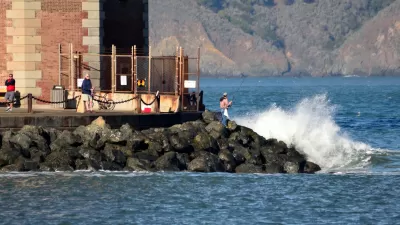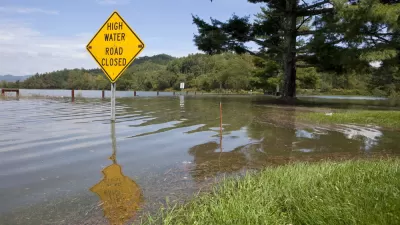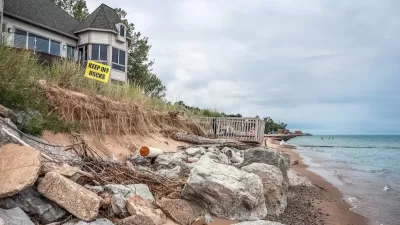Zillow has released research on how many of the nation's homes may be underwater (literally) by the year 2100. Florida, Hawaii, New Jersey, and Louisiana are at the highest risk.

In an attempt to quantify the effect of climate change on housing supply, Zillow has compiled data on how many structures will likely be in danger by the year 2100, if not sooner.
Krishna Rao writes, "To quantify the impact of rising sea levels, we used maps released by the National Oceanic and Atmospheric Administration (NOAA) showing which parts of coastal states will be underwater if sea levels rise by six feet. Why six feet? Some estimates suggest sea levels will rise that much by the year 2100 if climate change continues unchecked."
"Nationwide, almost 1.9 million homes (or roughly 2 percent of all U.S. homes) – worth a combined $882 billion – are at risk of being underwater by 2100. And in some states, the fraction of properties at risk of being underwater is alarmingly high." The coastal homes at risk are worth significantly more than the American average: about $300,000 to the average $187,000.
The article includes a sobering chart showing estimates of how many properties may be affected by 2100, their combined value on the current market, and what fraction of the state's total housing stock they represent. There are also maps of individual cities with potentially flooded areas marked in blue.
FULL STORY: Climate Change and Housing: Will a Rising Tide Sink all Homes?

Alabama: Trump Terminates Settlements for Black Communities Harmed By Raw Sewage
Trump deemed the landmark civil rights agreement “illegal DEI and environmental justice policy.”

Planetizen Federal Action Tracker
A weekly monitor of how Trump’s orders and actions are impacting planners and planning in America.

The 120 Year Old Tiny Home Villages That Sheltered San Francisco’s Earthquake Refugees
More than a century ago, San Francisco mobilized to house thousands of residents displaced by the 1906 earthquake. Could their strategy offer a model for the present?

In Both Crashes and Crime, Public Transportation is Far Safer than Driving
Contrary to popular assumptions, public transportation has far lower crash and crime rates than automobile travel. For safer communities, improve and encourage transit travel.

Report: Zoning Reforms Should Complement Nashville’s Ambitious Transit Plan
Without reform, restrictive zoning codes will limit the impact of the city’s planned transit expansion and could exclude some of the residents who depend on transit the most.

Judge Orders Release of Frozen IRA, IIJA Funding
The decision is a victory for environmental groups who charged that freezing funds for critical infrastructure and disaster response programs caused “real and irreparable harm” to communities.
Urban Design for Planners 1: Software Tools
This six-course series explores essential urban design concepts using open source software and equips planners with the tools they need to participate fully in the urban design process.
Planning for Universal Design
Learn the tools for implementing Universal Design in planning regulations.
Clanton & Associates, Inc.
Jessamine County Fiscal Court
Institute for Housing and Urban Development Studies (IHS)
City of Grandview
Harvard GSD Executive Education
Toledo-Lucas County Plan Commissions
Salt Lake City
NYU Wagner Graduate School of Public Service





























